
Food waste
Saving food and helping people
A visit to "Tischlein deck dich": members of the FMC Executive Board support the team on site.
navigation
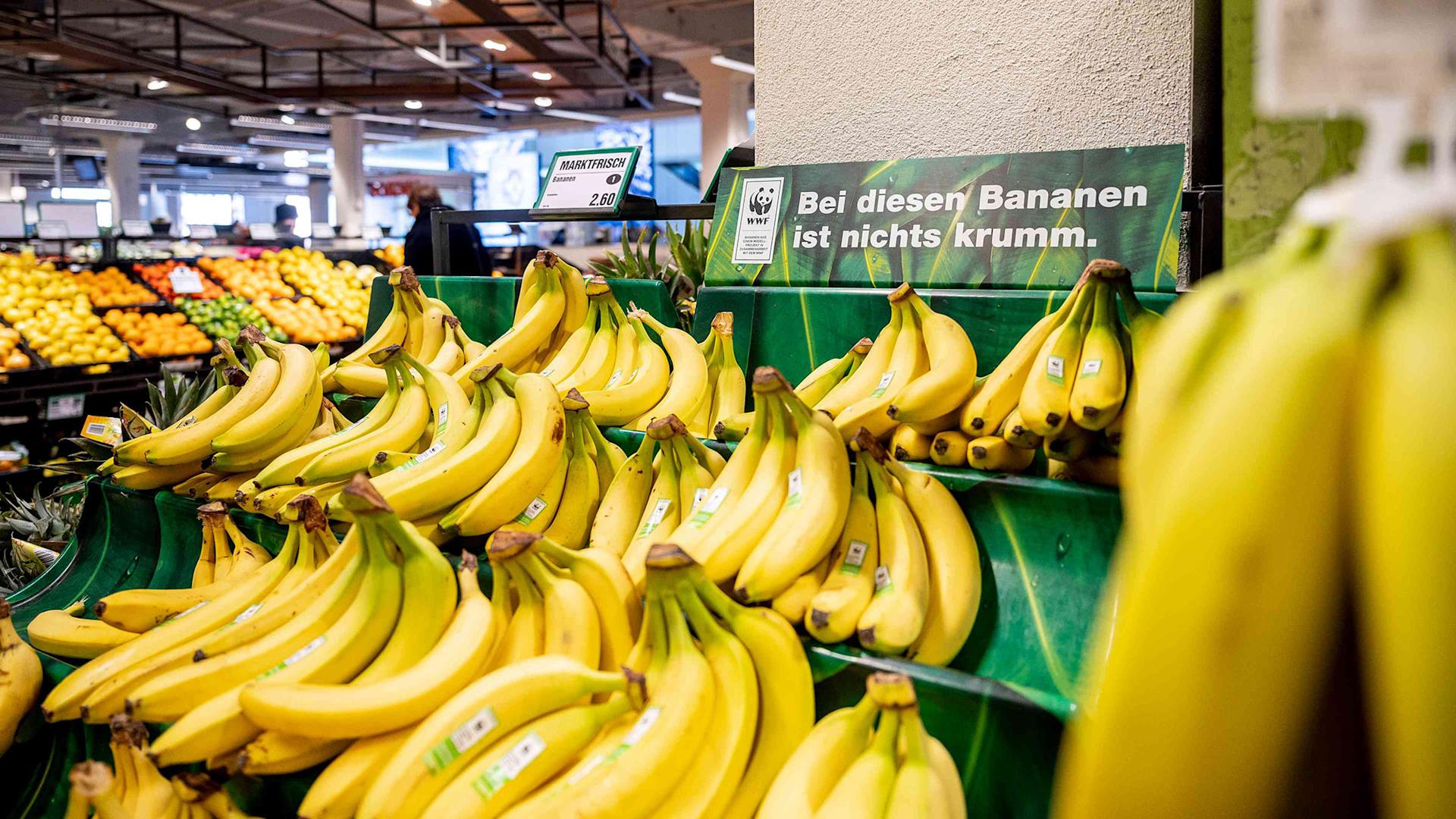
Sustainable products
Bananas are more popular than any other fruit. That's why it's all the more important that they are grown sustainably. Migros ensures that this is the case through its WWF banana project in Ecuador and Colombia.
The banana is one of the most popular fruits in Switzerland. Migros customers currently buy 30,000 tonnes of bananas a year. In 1931, the banana was one of the first tropical products available at Migros. It's now a best-seller and the number one-product in the Migros fresh produce section. In fact, it is literally in first place: on our scales, you press 1 for bananas.
Because they taste twice as good if you have a clear conscience, most of our bananas come from sustainable organic Fairtrade or Demeter sources or a project launched jointly with the WWF back in 2016.
Conventional banana cultivation is associated with a number of ecological and social challenges. The fruit is grown on huge plantations using lots of water, fertiliser and pesticides.
This is where the WWF project for more responsible banana cultivation comes in. The project aims to make production more socially responsible and environmentally friendly. Almost 20 plantations in Ecuador and Colombia are currently involved.
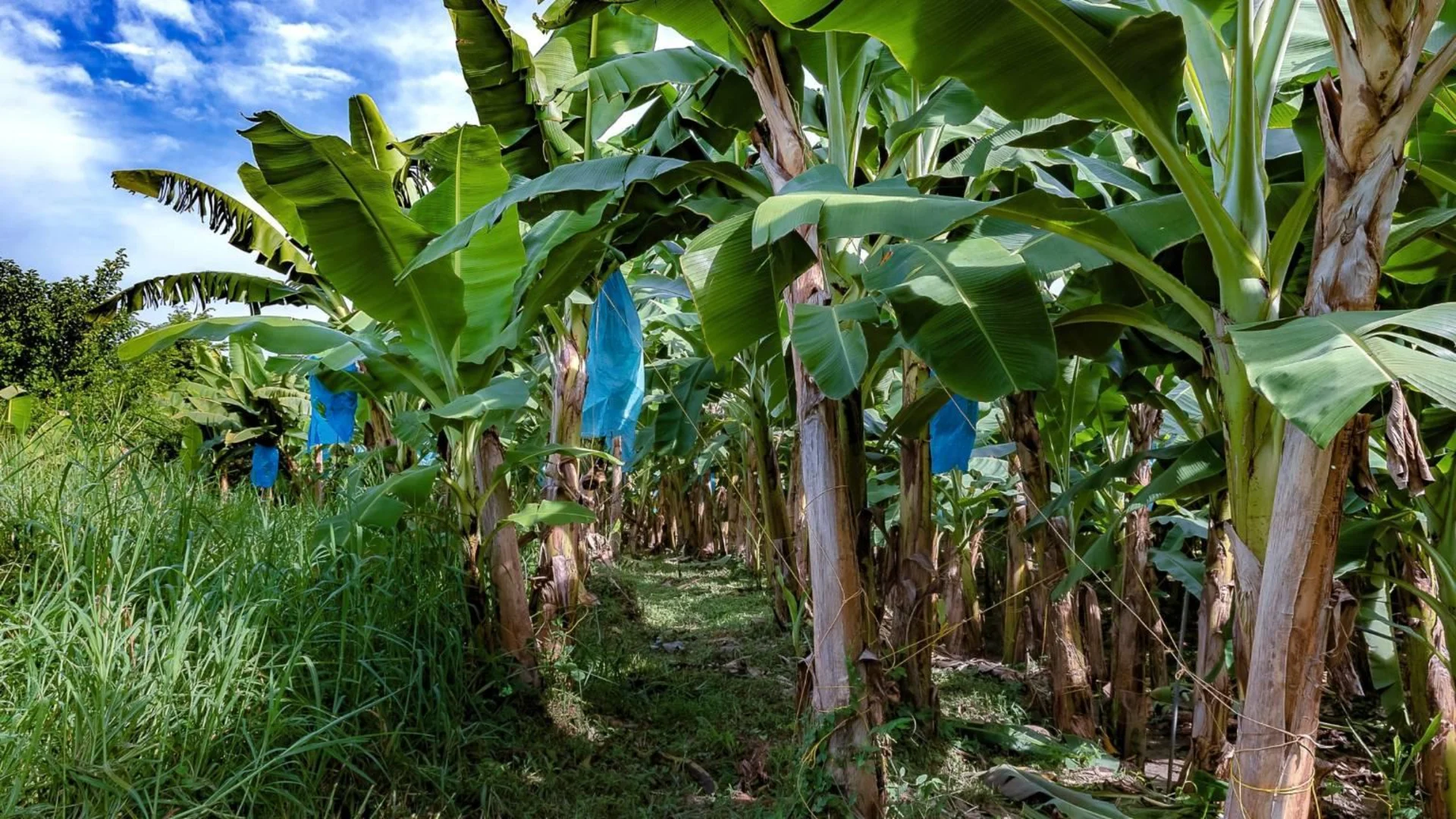
For example, the irrigation method has changed fundamentally in recent years. In the past, producers simply guessed how much they should water the banana palms on their plantations. Today, water consumption is calculated separately for each plantation. That's because the water requirements differ from one plantation to another and depend on soil conditions and evaporation rates, for example.
Weather stations also provide precise data on factors such as air temperature, wind speed and sunshine. All this enables precise forecasts to be made. As a result, the plants are watered only as much as they actually need. Thanks to a water treatment plant, the water in which bananas are washed is reused over and over and again. These measures have ensured that the water consumed at plantations has fallen dramatically.
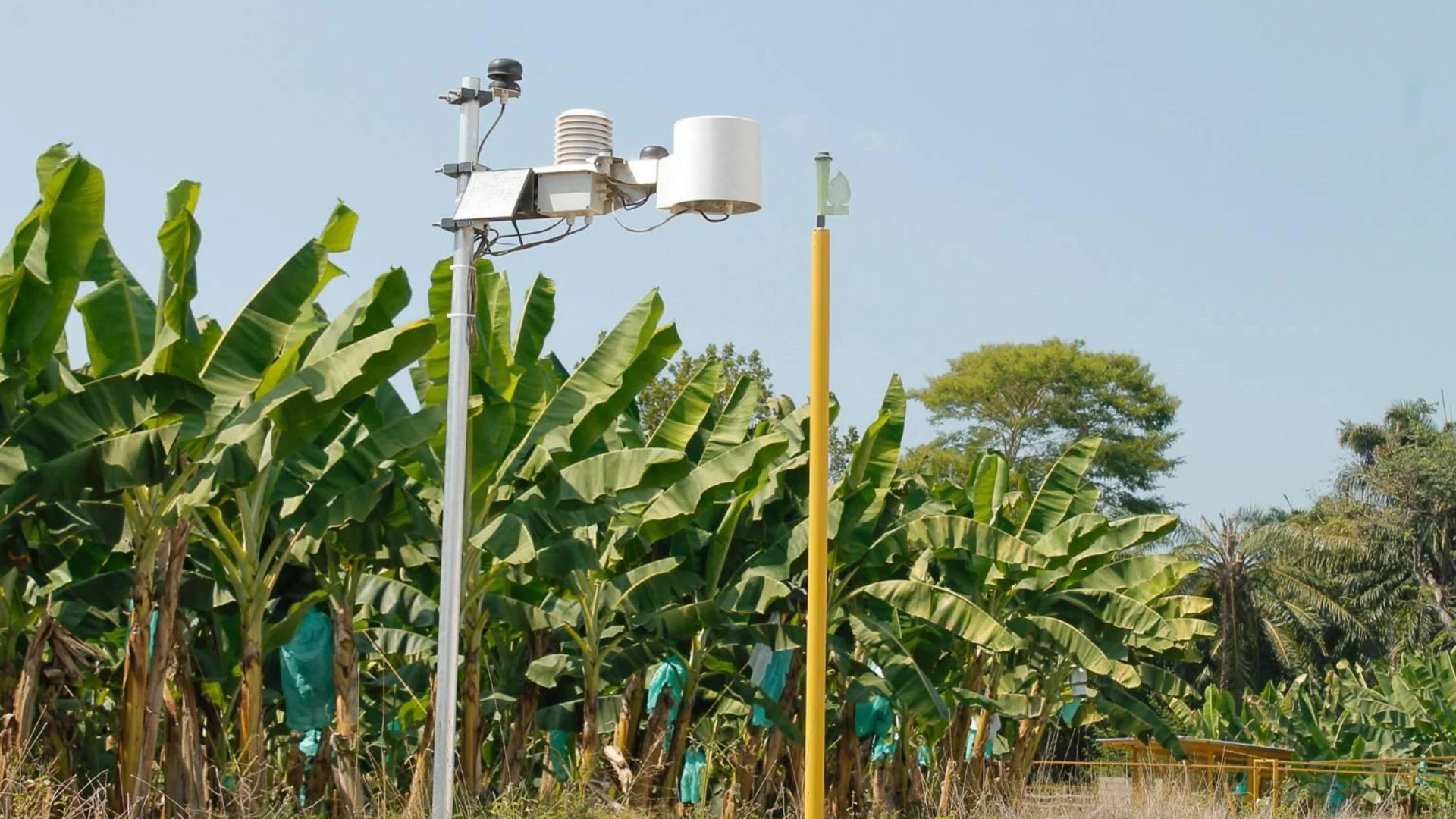
Fertilisers and weed killers are also no longer employed. Today, weeds are cut with a brush cutter and left on the ground. The banana plants also remain in the field at the end of their life cycle. This provides the soil with additional nutrients and prevents it from drying out so quickly.
The WWF project aims for continuous improvement. Twice a year, independent experts check the measures taken by the plantations that also sell bananas to Migros.
Find out all about our banana farms and the people behind them.

Banaloli Farm 1 is located in Ecuador, South America – a diverse country with highlands, mountains, rainforests and coasts.
This plantation is over 2.8 km² in size – equivalent to 403 football pitches.
Around 293 people work on this plantation.
Located in South America between Colombia and Peru, Ecuador is one of the world’s most diverse countries – with highlands, volcanic mountains, Amazon rainforest and low coastland. Thanks to its tropical climate and fertile soil, Ecuador is the world’s largest supplier of bananas, accounting for over 30% of global exports.
Guayaquil is the capital of the Guayas province, one of the largest cities in Ecuador and home to the country’s principal seaport – great for exporting bananas from the surrounding regions, providing the skin of the fruit isn’t damaged by volcanic ash.
Two opposing currents in the Pacific greatly influence the climate. The warm northerly current can trigger «El Niño» in the rainy season and cause flooding. In summer, the cold Humboldt Current decreases the amount of rainfall, which can lead to drought over the long term – known as «La Niña».
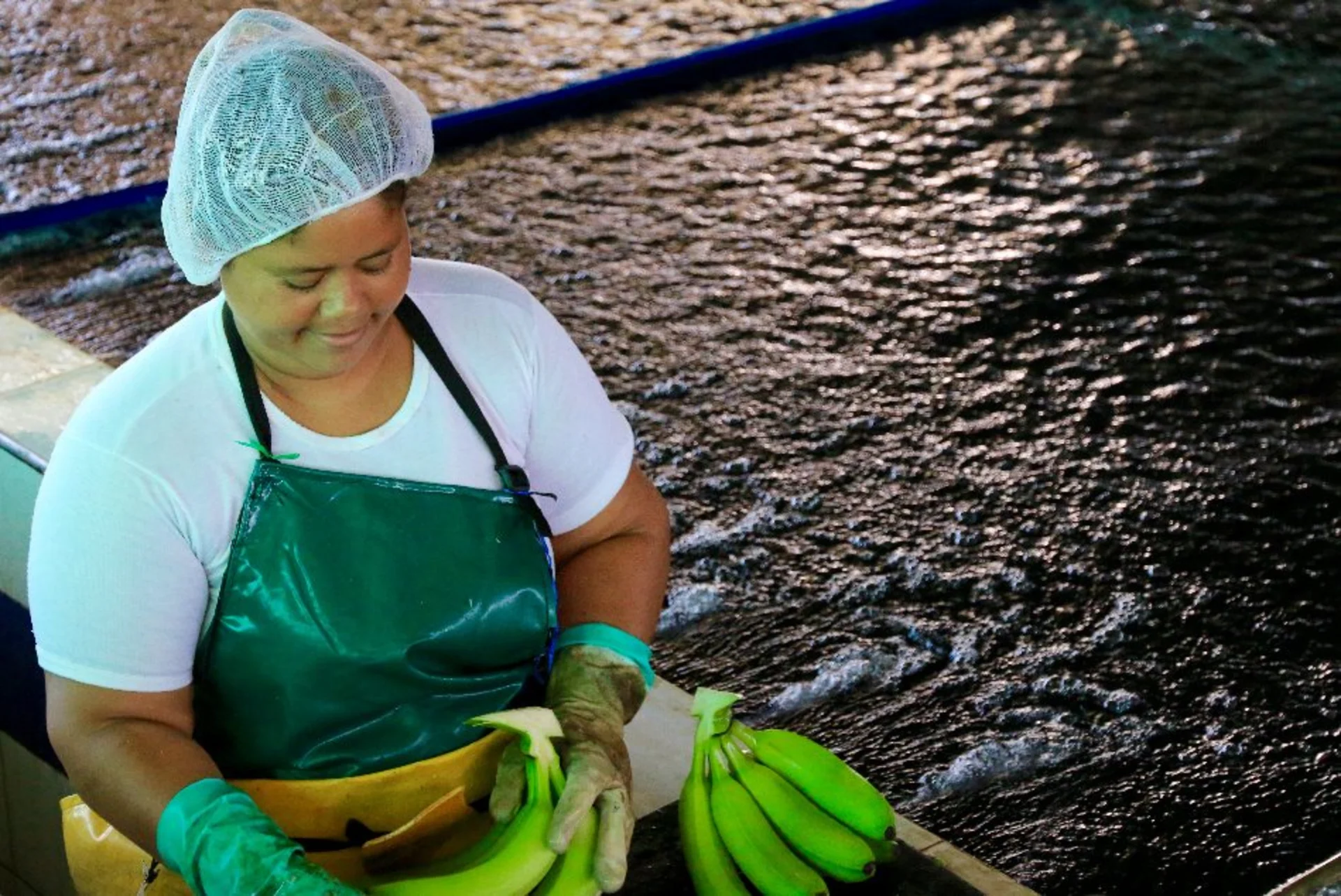
Elba Farm is located in Ecuador, South America – a diverse country with highlands, mountains, rainforests and coasts.
This plantation is over 3.2 km² in size – equivalent to 454 football pitches.
Around 290 people work on this plantation.
Located in South America between Colombia and Peru, Ecuador is one of the world’s most diverse countries – with highlands, volcanic mountains, Amazon rainforest and low coastland. Thanks to its tropical climate and fertile soil, Ecuador is the world’s largest supplier of bananas, accounting for over 30% of global exports.
Guayaquil is the capital of the Guayas province, one of the largest cities in Ecuador and home to the country’s principal seaport – great for exporting bananas from the surrounding regions, providing the skin of the fruit isn’t damaged by volcanic ash.
Two opposing currents in the Pacific greatly influence the climate. The warm northerly current can trigger «El Niño» in the rainy season and cause flooding. In summer, the cold Humboldt Current decreases the amount of rainfall, which can lead to drought over the long term – known as «La Niña».
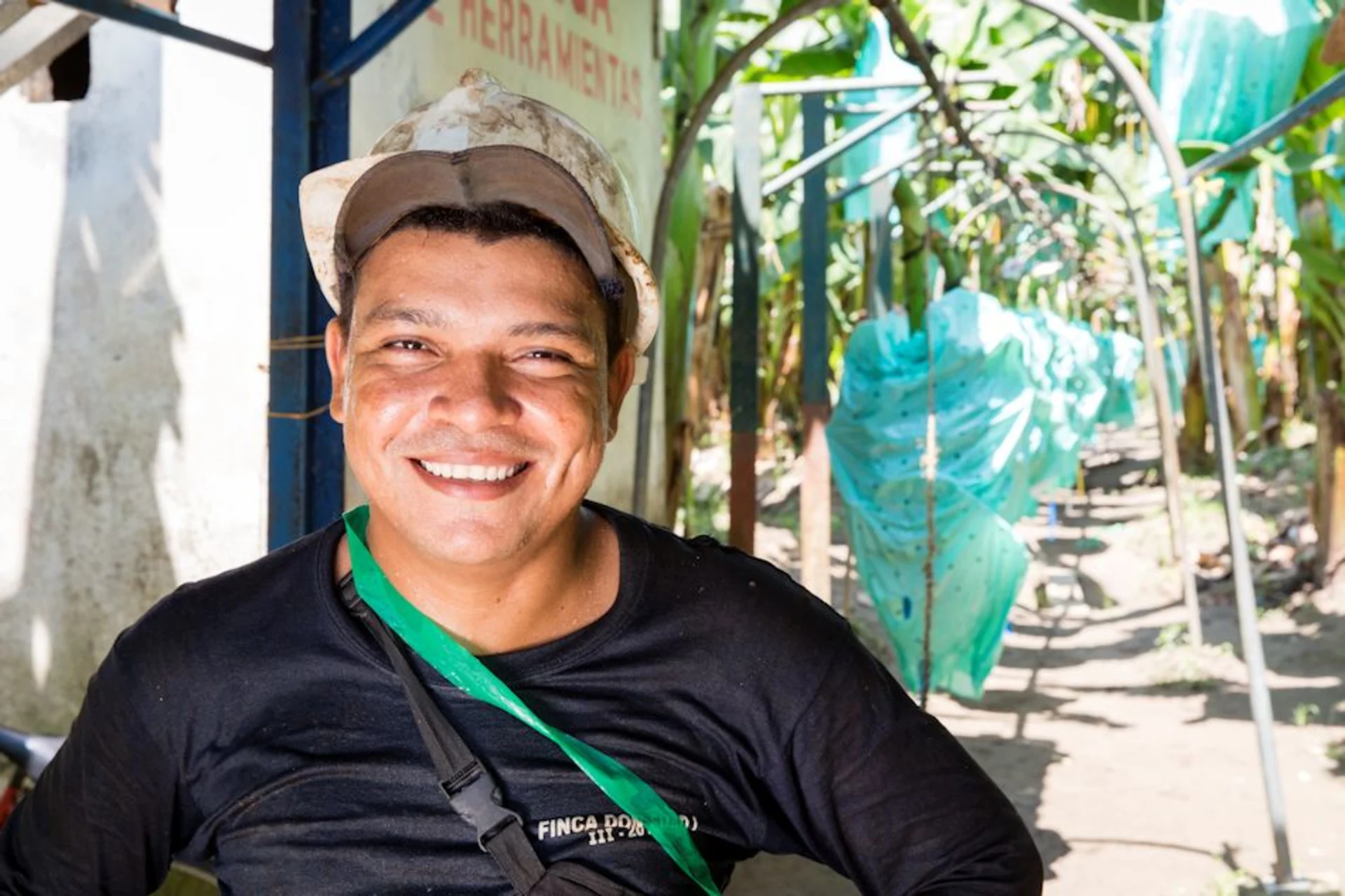
Maria Jose Farm 1 is located in Ecuador, South America – a diverse country with highlands, mountains, rainforests and coasts.
This plantation is over 3.6 km² in size – equivalent to 508 football pitches.
Around 356 people work on this plantation.
Located in South America between Colombia and Peru, Ecuador is one of the world’s most diverse countries – with highlands, volcanic mountains, Amazon rainforest and low coastland. Thanks to its tropical climate and fertile soil, Ecuador is the world’s largest supplier of bananas, accounting for over 30% of global exports.
Guayaquil is the capital of the Guayas province, one of the largest cities in Ecuador and home to the country’s principal seaport – great for exporting bananas from the surrounding regions, providing the skin of the fruit isn’t damaged by volcanic ash.
Two opposing currents in the Pacific greatly influence the climate. The warm northerly current can trigger «El Niño» in the rainy season and cause flooding. In summer, the cold Humboldt Current decreases the amount of rainfall, which can lead to drought over the long term – known as «La Niña».
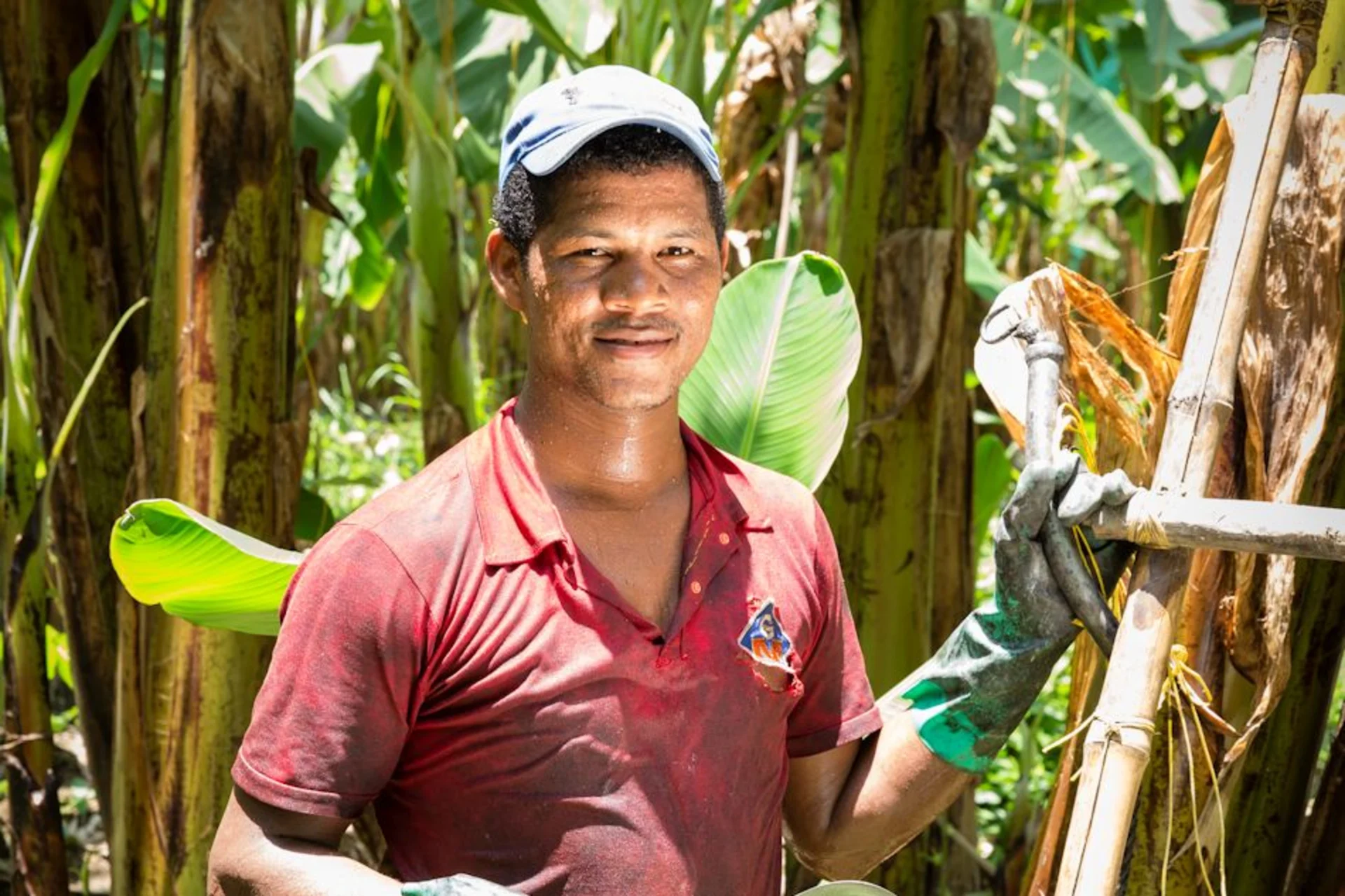
Eva Farm is located in the north of Colombia. It’s hot and tropically humid there – just how bananas like it.
This plantation is over 1.3 km² in size – equivalent to 181 football pitches.
Around 122 people work on this plantation.
Colombia is the fourth largest country in South America and lies between the Pacific and Atlantic oceans. It has coastal lowlands, Andean highlands at over 5,700 m altitude and tropical rainforests. Bananas grow between the mountains and the sea. Incidentally, plantains are a popular side dish here. And «apple bananas» is a dessert.
Magdalena has been the historic banana-growing region since the end of the 19th century. It’s hot and relatively dry there, so the plantations need irrigation systems. Organic farming is practised in some areas.
The climate in Colombia is hot and tropically humid – just how bananas like it. Despite the Atlantic coast, the risk of hurricanes remains low compared to Central American countries. There’s more likely to be a drought, known as «La Niña», than an «El Niño» phenomenon with flooding.
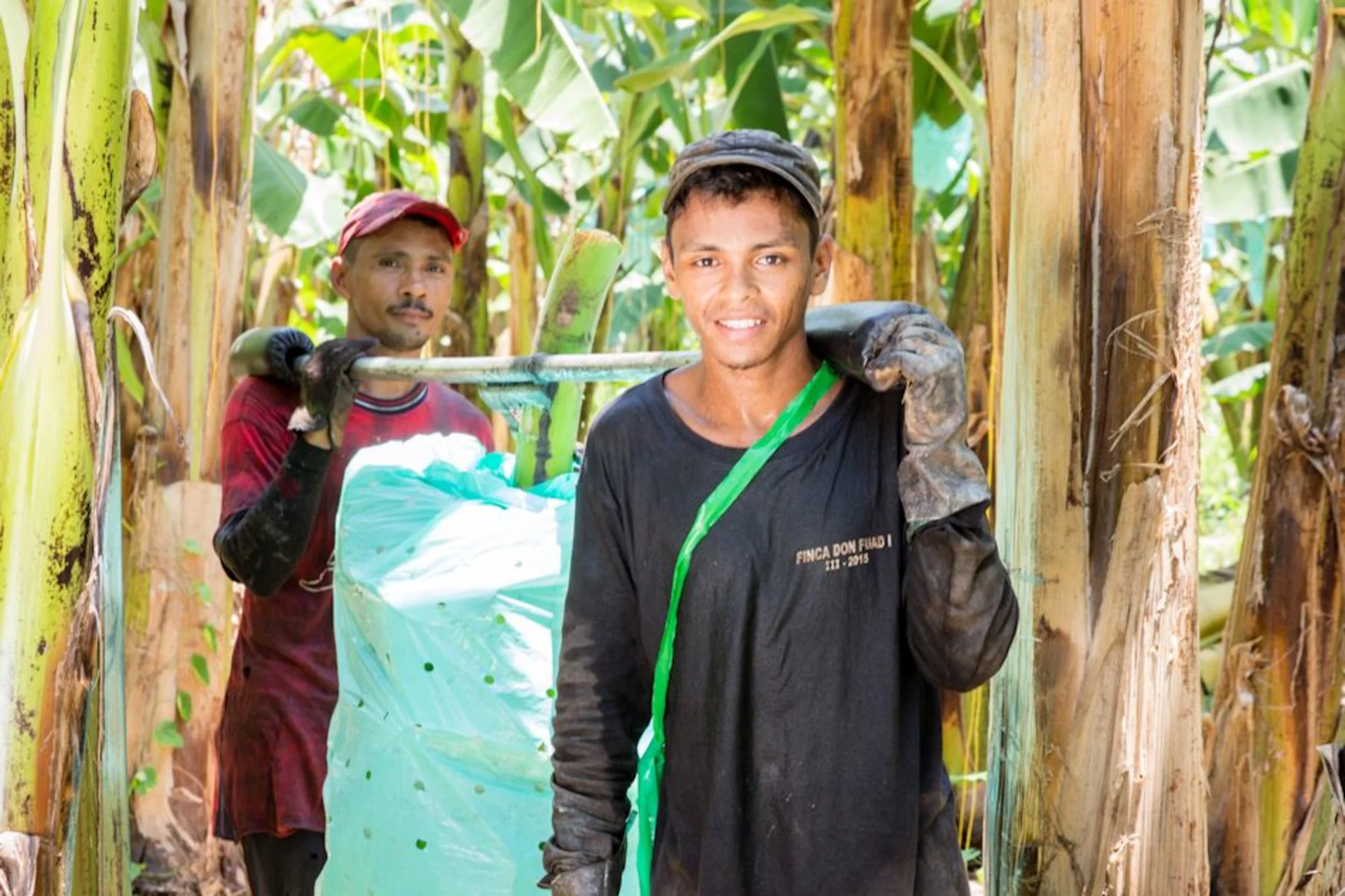
Don Fuad 1 Farm is located in the north of Colombia. It’s hot and tropically humid there – just how bananas like it.
This plantation is over 0.8 km² in size – equivalent to 119 football pitches.
Around 91 people work on this plantation.
Colombia is the fourth largest country in South America and lies between the Pacific and Atlantic oceans. It has coastal lowlands, Andean highlands at over 5,700 m altitude and tropical rainforests. Bananas grow between the mountains and the sea. Incidentally, plantains are a popular side dish here. And «apple bananas» is a dessert.
Magdalena has been the historic banana-growing region since the end of the 19th century. It’s hot and relatively dry there, so the plantations need irrigation systems. Organic farming is practised in some areas.
The climate in Colombia is hot and tropically humid – just how bananas like it. Despite the Atlantic coast, the risk of hurricanes remains low compared to Central American countries. There’s more likely to be a drought, known as «La Niña», than an «El Niño» phenomenon with flooding.

Don Fuad 2 Farm is located in the north of Colombia. It’s hot and tropically humid there – just how bananas like it.
This plantation is over 0.9 km² in size – equivalent to 121 football pitches.
Around 80 people work on this plantation.
Colombia is the fourth largest country in South America and lies between the Pacific and Atlantic oceans. It has coastal lowlands, Andean highlands at over 5,700 m altitude and tropical rainforests. Bananas grow between the mountains and the sea. Incidentally, plantains are a popular side dish here. And «apple bananas» is a dessert.
Magdalena has been the historic banana-growing region since the end of the 19th century. It’s hot and relatively dry there, so the plantations need irrigation systems. Organic farming is practised in some areas.
The climate in Colombia is hot and tropically humid – just how bananas like it. Despite the Atlantic coast, the risk of hurricanes remains low compared to Central American countries. There’s more likely to be a drought, known as «La Niña», than an «El Niño» phenomenon with flooding.

Don Marce Sur Farm is located in the north of Colombia. It’s hot and tropically humid there – just how bananas like it.
This plantation is over 0.8 km² in size – equivalent to 115 football pitches.
Around 92 people work on this plantation.
Colombia is the fourth largest country in South America and lies between the Pacific and Atlantic oceans. It has coastal lowlands, Andean highlands at over 5,700 m altitude and tropical rainforests. Bananas grow between the mountains and the sea. Incidentally, plantains are a popular side dish here. And «apple bananas» is a dessert.
Magdalena has been the historic banana-growing region since the end of the 19th century. It’s hot and relatively dry there, so the plantations need irrigation systems. Organic farming is practised in some areas.
The climate in Colombia is hot and tropically humid – just how bananas like it. Despite the Atlantic coast, the risk of hurricanes remains low compared to Central American countries. There’s more likely to be a drought, known as «La Niña», than an «El Niño» phenomenon with flooding.

Enano Farm is located in the north of Colombia. It’s hot and tropically humid there – just how bananas like it.
This plantation is over 1.2 km² in size – equivalent to 167 football pitches.
Around 116 people work on this plantation.
Colombia is the fourth largest country in South America and lies between the Pacific and Atlantic oceans. It has coastal lowlands, Andean highlands at over 5,700 m altitude and tropical rainforests. Bananas grow between the mountains and the sea. Incidentally, plantains are a popular side dish here. And «apple bananas» is a dessert.
Magdalena has been the historic banana-growing region since the end of the 19th century. It’s hot and relatively dry there, so the plantations need irrigation systems. Organic farming is practised in some areas.
The climate in Colombia is hot and tropically humid – just how bananas like it. Despite the Atlantic coast, the risk of hurricanes remains low compared to Central American countries. There’s more likely to be a drought, known as «La Niña», than an «El Niño» phenomenon with flooding.
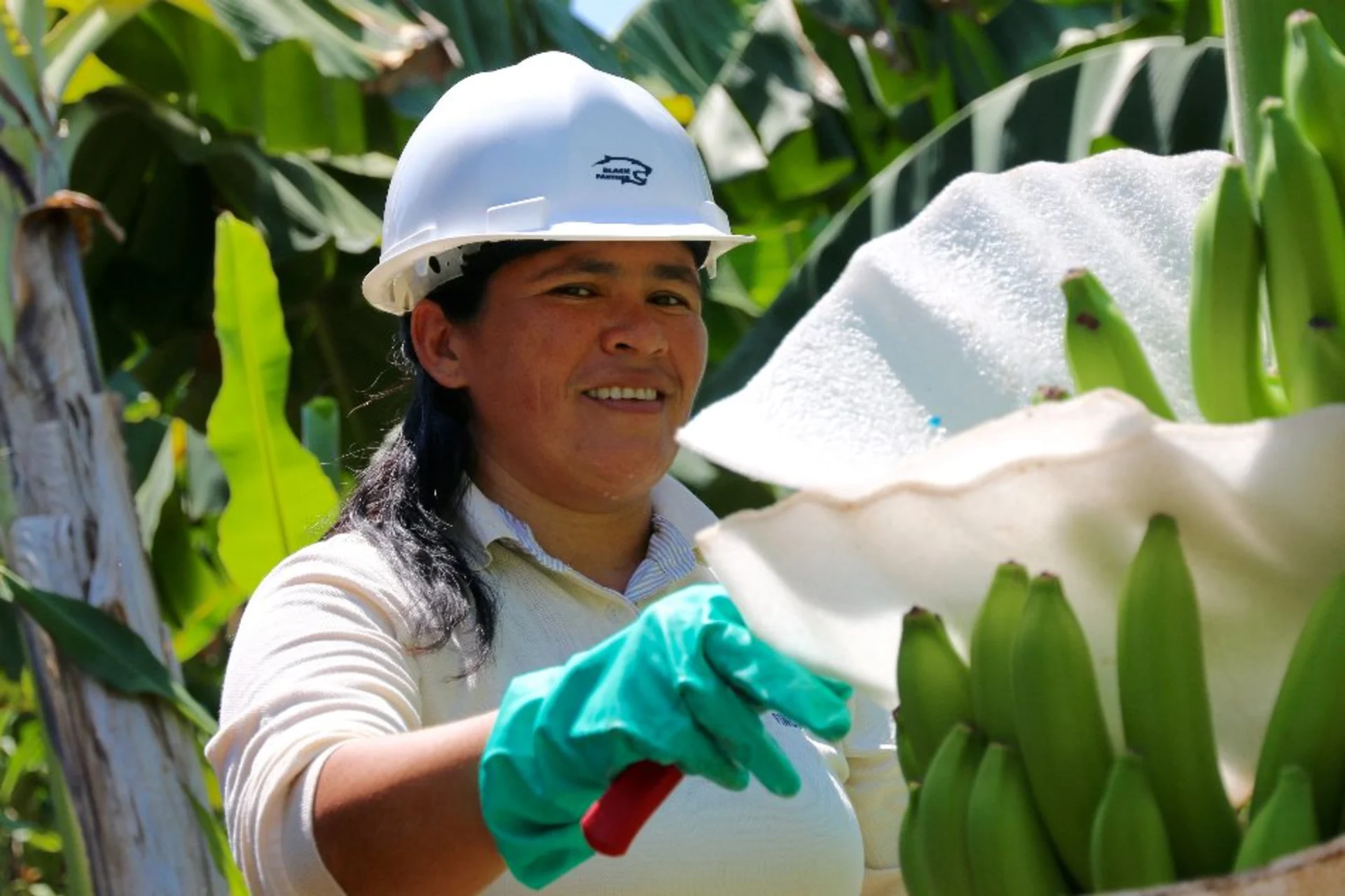
Eufemia Farm is located in the north of Colombia. It’s hot and tropically humid there – just how bananas like it.
This plantation is over 1.6 km² in size – equivalent to 220 football pitches.
Around 148 people work on this plantation.
Colombia is the fourth largest country in South America and lies between the Pacific and Atlantic oceans. It has coastal lowlands, Andean highlands at over 5,700 m altitude and tropical rainforests. Bananas grow between the mountains and the sea. Incidentally, plantains are a popular side dish here. And «apple bananas» is a dessert.
Magdalena has been the historic banana-growing region since the end of the 19th century. It’s hot and relatively dry there, so the plantations need irrigation systems. Organic farming is practised in some areas.
The climate in Colombia is hot and tropically humid – just how bananas like it. Despite the Atlantic coast, the risk of hurricanes remains low compared to Central American countries. There’s more likely to be a drought, known as «La Niña», than an «El Niño» phenomenon with flooding.
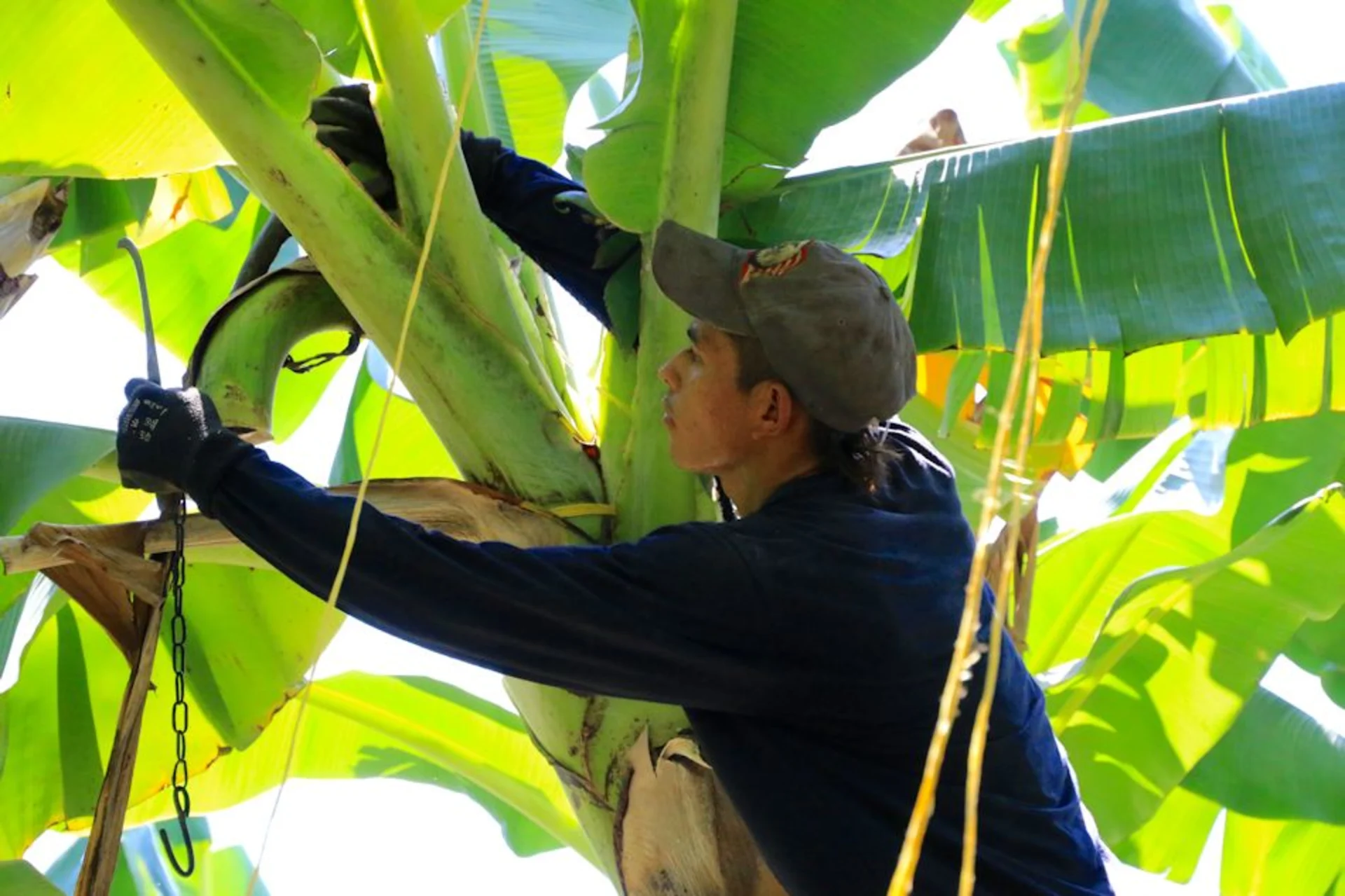
Olga Farm is located in the north of Colombia. It’s hot and tropically humid there – just how bananas like it.
This plantation is over 0.5 km² in size – equivalent to 67 football pitches.
Around 55 people work on this plantation.
Colombia is the fourth largest country in South America and lies between the Pacific and Atlantic oceans. It has coastal lowlands, Andean highlands at over 5,700 m altitude and tropical rainforests. Bananas grow between the mountains and the sea. Incidentally, plantains are a popular side dish here. And «apple bananas» is a dessert.
Magdalena has been the historic banana-growing region since the end of the 19th century. It’s hot and relatively dry there, so the plantations need irrigation systems. Organic farming is practised in some areas.
The climate in Colombia is hot and tropically humid – just how bananas like it. Despite the Atlantic coast, the risk of hurricanes remains low compared to Central American countries. There’s more likely to be a drought, known as «La Niña», than an «El Niño» phenomenon with flooding.
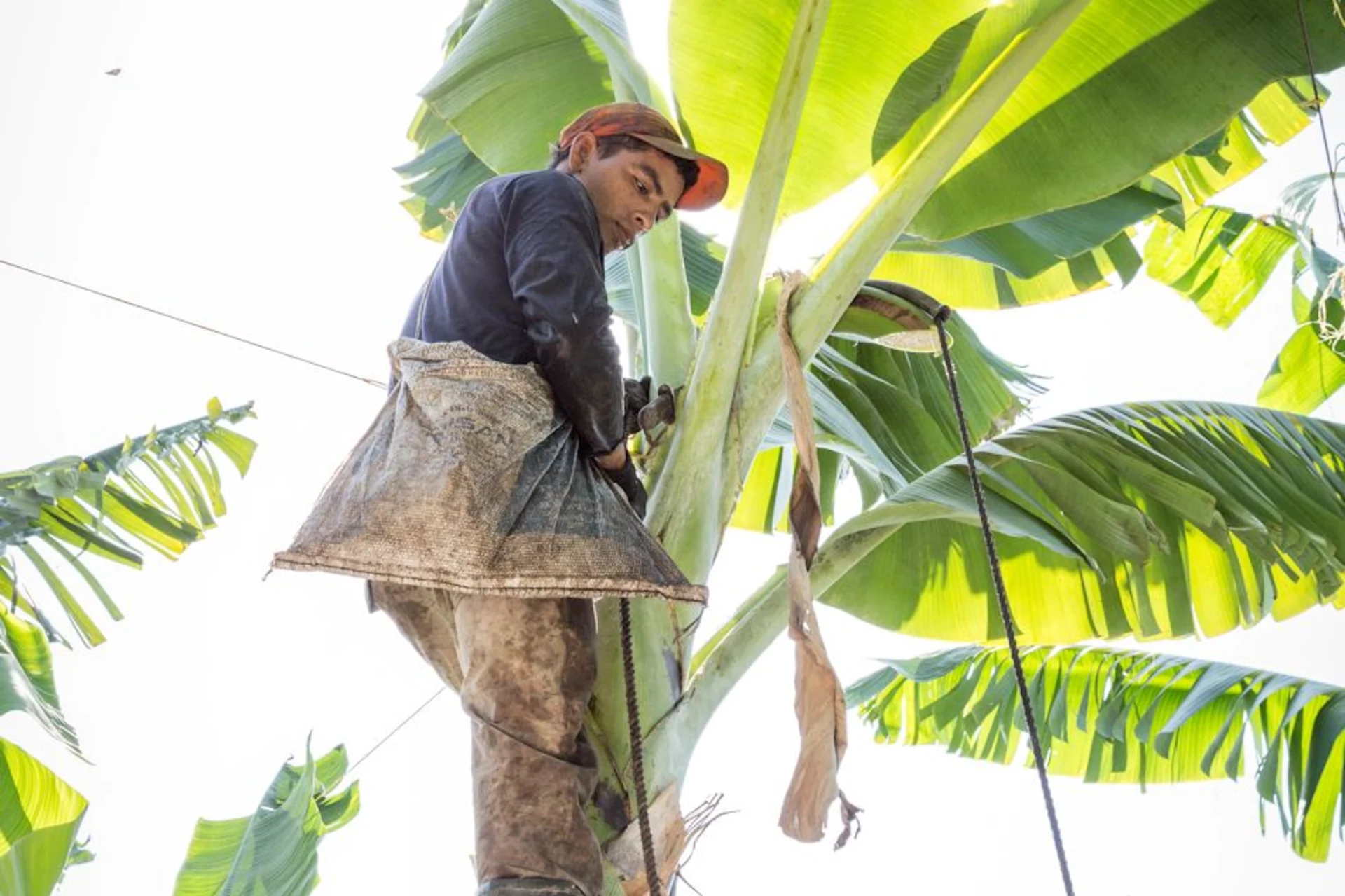
Sami Farm is located in the north of Colombia. It’s hot and tropically humid there – just how bananas like it.
This plantation is over 1.33 km² in size – equivalent to 186 football pitches.
Around 145 people work on this plantation.
Colombia is the fourth largest country in South America and lies between the Pacific and Atlantic oceans. It has coastal lowlands, Andean highlands at over 5,700 m altitude and tropical rainforests. Bananas grow between the mountains and the sea. Incidentally, plantains are a popular side dish here. And «apple bananas» is a dessert.
Magdalena has been the historic banana-growing region since the end of the 19th century. It’s hot and relatively dry there, so the plantations need irrigation systems. Organic farming is practised in some areas.
The climate in Colombia is hot and tropically humid – just how bananas like it. Despite the Atlantic coast, the risk of hurricanes remains low compared to Central American countries. There’s more likely to be a drought, known as «La Niña», than an «El Niño» phenomenon with flooding.
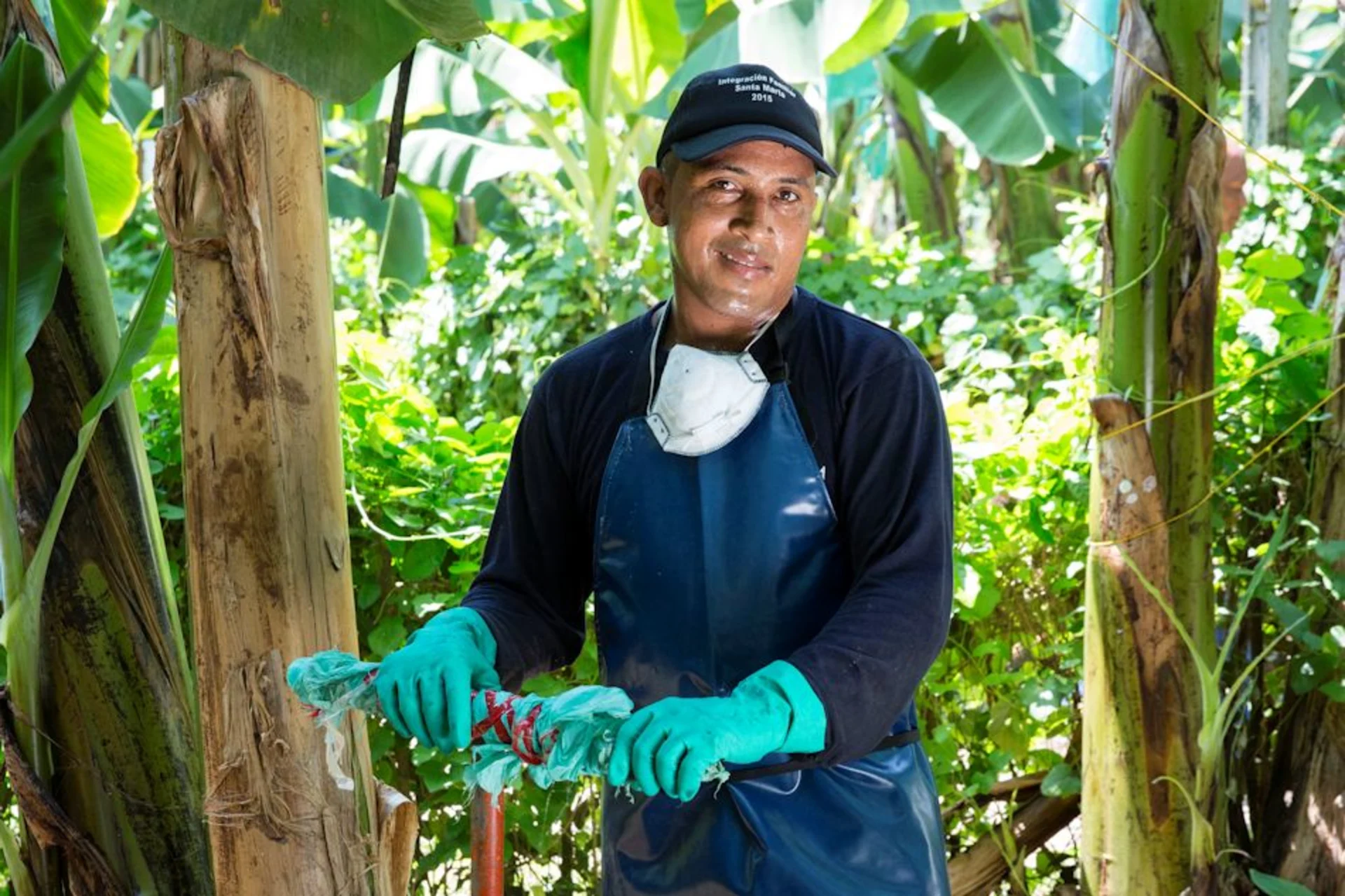
Teresa Farm is located in the north of Colombia. It’s hot and tropically humid there – just how bananas like it.
This plantation is over 1 km² in size – equivalent to 135 football pitches.
Around 104 people work on this plantation.
Colombia is the fourth largest country in South America and lies between the Pacific and Atlantic oceans. It has coastal lowlands, Andean highlands at over 5,700 m altitude and tropical rainforests. Bananas grow between the mountains and the sea. Incidentally, plantains are a popular side dish here. And «apple bananas» is a dessert.
Magdalena has been the historic banana-growing region since the end of the 19th century. It’s hot and relatively dry there, so the plantations need irrigation systems. Organic farming is practised in some areas.
The climate in Colombia is hot and tropically humid – just how bananas like it. Despite the Atlantic coast, the risk of hurricanes remains low compared to Central American countries. There’s more likely to be a drought, known as «La Niña», than an «El Niño» phenomenon with flooding.
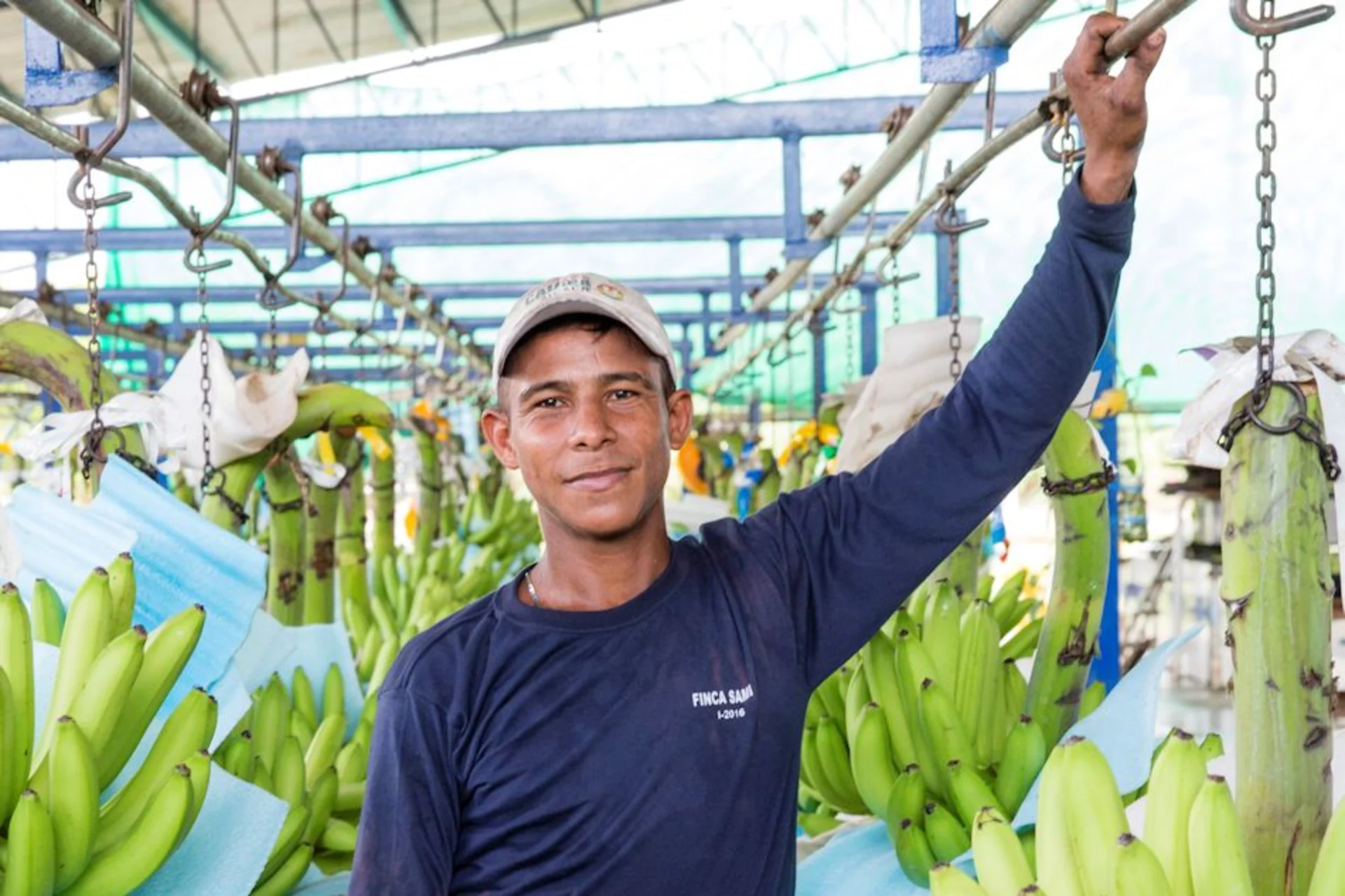
Vega Farm is located in the north of Colombia. It’s hot and tropically humid there – just how bananas like it.
This plantation is over 0.7 km² in size – equivalent to 97 football pitches.
Around 77 people work on this plantation.
Colombia is the fourth largest country in South America and lies between the Pacific and Atlantic oceans. It has coastal lowlands, Andean highlands at over 5,700 m altitude and tropical rainforests. Bananas grow between the mountains and the sea. Incidentally, plantains are a popular side dish here. And «apple bananas» is a dessert.
Magdalena has been the historic banana-growing region since the end of the 19th century. It’s hot and relatively dry there, so the plantations need irrigation systems. Organic farming is practised in some areas.
The climate in Colombia is hot and tropically humid – just how bananas like it. Despite the Atlantic coast, the risk of hurricanes remains low compared to Central American countries. There’s more likely to be a drought, known as «La Niña», than an «El Niño» phenomenon with flooding.
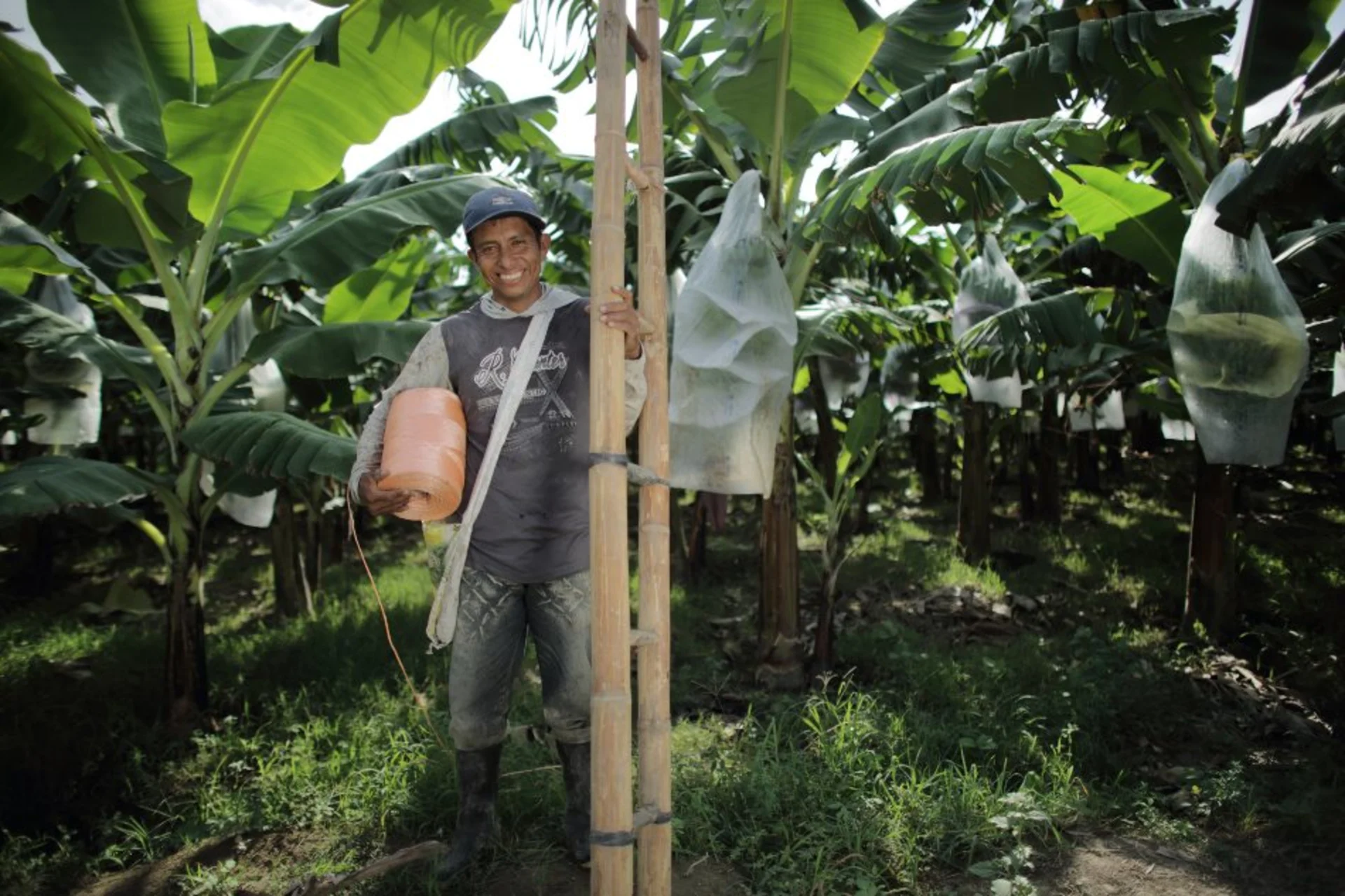
San Antonio Farm is located in the north of Colombia. It’s hot and tropically humid there – just how bananas like it.
This plantation is over 2.1 km² in size – equivalent to 301 football pitches.
Around 212 people work on this plantation.
Colombia is the fourth largest country in South America and lies between the Pacific and Atlantic oceans. It has coastal lowlands, Andean highlands at over 5,700 m altitude and tropical rainforests. Bananas grow between the mountains and the sea. Incidentally, plantains are a popular side dish here. And «apple bananas» is a dessert.
Magdalena has been the historic banana-growing region since the end of the 19th century. It’s hot and relatively dry there, so the plantations need irrigation systems. Organic farming is practised in some areas.
The climate in Colombia is hot and tropically humid – just how bananas like it. Despite the Atlantic coast, the risk of hurricanes remains low compared to Central American countries. There’s more likely to be a drought, known as «La Niña», than an «El Niño» phenomenon with flooding.
Sustainability is part of our culture and we still have plenty more on our agenda. Learn more about it in our Stories!